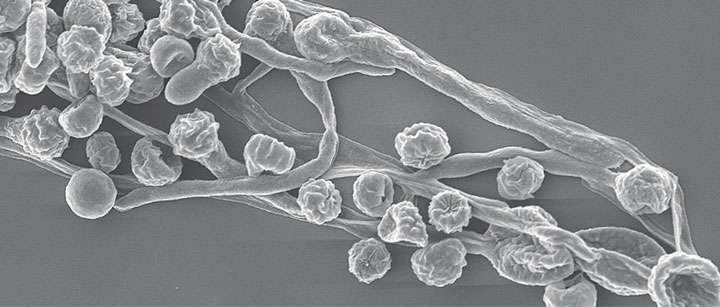Adjusting the adhesion of bacteria or other microorganisms on the surface of biomaterials is a decisive factor for the clinical success of implantable materials. At the Fraunhofer IGB we develop surface coatings that suppress the build-up of biofilms – actively by releasing active substances or passively by reducing the bacterial adhesion.
Adhesion of microorganisms
Preventing and combating biofilms

If biofilms have once established themselves on a surface, it is generally difficult to deal with the problem. In this life form they are distinctly more resistant than individual cells and in many cases withstand even high doses of disinfectants and cleaning agents. In order to hinder the initial formation of biofilms, the use of suitable antimicrobial surface modifications, for example by means of the bonding of biocidal substances or photocatalytic finishes, is therefore indicated. An appropriate surface finish can prevent the microbial adhesion on the surface of the material or the reproduction of the cells from the outset.
At the Fraunhofer IGB interfacial engineers – in cooperation with microbiologists and cell biologists – have already developed various surface finishes. They can be characterized with the assistance of physical and chemical methods, however their biological efficacy can only be demonstrated using living systems.
 Fraunhofer Institute for Interfacial Engineering and Biotechnology IGB
Fraunhofer Institute for Interfacial Engineering and Biotechnology IGB